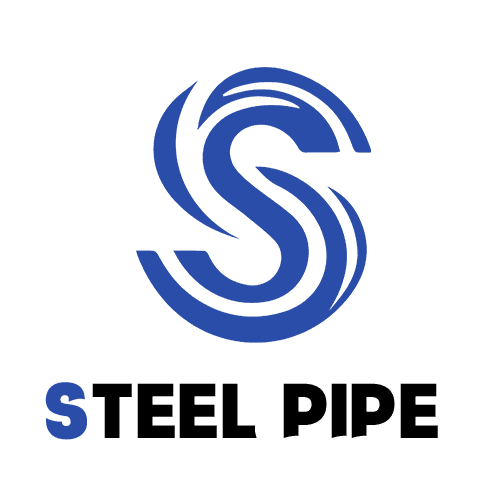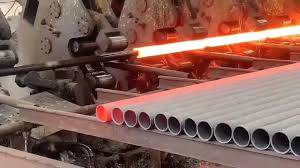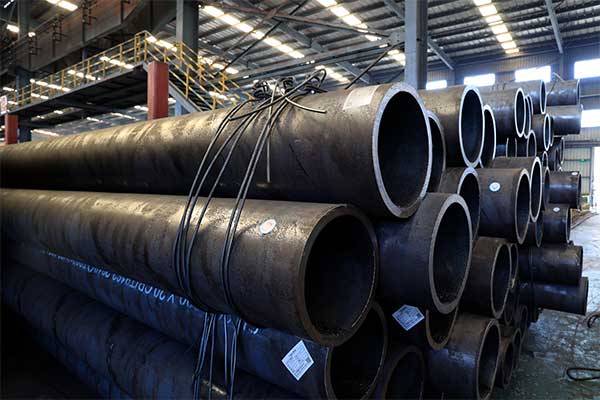Introduction
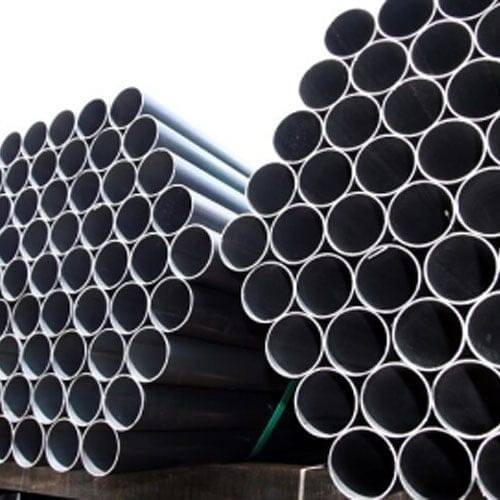
Boiler tubes are crucial components in industrial systems, playing a key role in heat transfer processes within various types of boilers. They are designed to handle high pressures and temperatures, making them essential for efficient and safe operation in power generation and other industrial applications. In this extensive blog post, we will explore the various types of boiler tubes, their unique characteristics, applications, and the factors to consider when selecting the appropriate type for specific uses.
What is a Boiler Tube?
Boiler tubes are specialized tubes used in the construction of boilers, which are devices that generate steam or hot water. These tubes carry either water or steam and must withstand high temperatures and pressures. The design and material of a boiler tube are critical for the overall efficiency and safety of the boiler system.
Types of Boiler Tubes
Boiler tubes come in several types, each suited to different operational requirements. The primary types include:
- Water-Tube Boiler Tubes
- Fire-Tube Boiler Tubes
- Superheater Tubes
- Economizer Tubes
Each type has specific attributes and is used in different sections of a boiler system to optimize performance.
Types of Boiler Tubes
Water-Tube Boiler Tubes
Water-tube boilers circulate water through tubes that are heated externally by combustion gases. This type of design allows for efficient heat transfer and is suitable for high-pressure and high-temperature applications.
Characteristics:
- Material: Typically constructed from high-quality steel or alloy steel.
- Thickness: Generally thicker due to higher pressure requirements.
- Application: Ideal for high-pressure environments.
Applications: Water-tube tubes are commonly used in power plants, large industrial boilers, and marine boilers due to their ability to handle extreme conditions and provide high steam output.
Fire-Tube Boiler Tubes
Fire-tube boilers feature tubes through which hot gases from combustion pass, surrounded by water. This design allows heat to be transferred from the gases to the water, generating steam.
Characteristics:
- Material: Usually made from carbon steel or low-alloy steel.
- Thickness: Thinner compared to water-tube tubes, reflecting lower pressure applications.
- Application: Suitable for moderate pressure and temperature applications.
Applications: Fire-tube tubes are used in smaller to medium-sized boilers, including those found in residential and commercial heating systems. They are often found in older industrial settings as well.
Superheater Tubes
Superheater tubes are designed to handle steam that has been heated beyond its saturation point. Located in the superheating section of the boiler, they help increase the efficiency of the steam cycle.
Characteristics:
- Material: Made from high-temperature alloys such as chromium-molybdenum steel or stainless steel.
- Thickness: Designed to withstand very high temperatures and pressures.
- Application: Used for superheating steam to improve system efficiency.
Applications: Superheater tubes are found in high-efficiency power plants, chemical processing facilities, and other settings where elevated steam temperatures are required for optimal performance.
Economizer Tubes
Economizer tubes recover residual heat from the flue gases before they exit the boiler. This process improves overall boiler efficiency by utilizing waste heat.
Characteristics:
- Material: Often made from corrosion-resistant alloys or materials with high thermal conductivity.
- Thickness: Varies based on heat recovery needs.
- Application: Handles moderate temperatures and pressures.
Applications: Economizer tubes are employed in various industrial and power generation applications to enhance energy efficiency and reduce fuel consumption.
Comparative Analysis of Boiler Tubes
To better understand the differences and applications of various boiler tubes, we will compare their key properties.
| Property | Water-Tube Tubes | Fire-Tube Tubes | Superheater Tubes | Economizer Tubes |
|---|---|---|---|---|
| Material | High-quality steel/alloy steel | Carbon steel/low-alloy steel | Chromium-molybdenum steel/stainless steel | Corrosion-resistant alloys |
| Thickness | Thick | Thin | Variable | Variable |
| Pressure Rating | High | Low to moderate | Very high | Moderate |
| Temperature Rating | High | Moderate | Very high | Moderate |
| Primary Use | High-pressure boilers | Low to medium pressure boilers | Superheating steam | Heat recovery |
Material Considerations
- Water-Tube Tubes: Require materials that can handle high pressure and temperature, often using alloy steels and high-quality carbon steels for their strength and thermal resistance.
- Fire-Tube Tubes: Typically made from carbon steel, suitable for moderate temperature and pressure applications.
- Superheater Tubes: Made from high-temperature alloys to withstand elevated temperatures and pressures.
- Economizer Tubes: Utilize corrosion-resistant materials due to their role in heat recovery from flue gases.
Thickness and Pressure Rating
- Water-Tube Tubes: Designed for higher pressures, generally thicker to withstand the intense conditions.
- Fire-Tube Tubes: Thinner and suitable for lower pressures, reflecting their use in less demanding applications.
- Superheater Tubes: Designed with variable thickness to handle very high pressures and temperatures.
- Economizer Tubes: Thickness varies depending on the heat recovery needs and operational environment.
Temperature and Efficiency
- Water-Tube Tubes: Capable of handling high temperatures, contributing to efficient steam generation and overall system performance.
- Fire-Tube Tubes: Suitable for moderate temperatures, typically used in less demanding applications.
- Superheater Tubes: Essential for very high temperatures, enhancing the efficiency of steam cycles.
- Economizer Tubes: Improve energy efficiency by recovering residual heat from exhaust gases.
Applications and Selection Criteria
Choosing the Right Boiler Tube
Selecting the appropriate boiler tube involves several considerations:
- Application Requirements: Match the type of boiler tube with the specific application, whether high pressure, high temperature, or heat recovery.
- Material Compatibility: Ensure the material can withstand the operating conditions, including temperature and pressure. High-quality alloys may be necessary for extreme conditions.
- Cost and Maintenance: Consider the initial cost and long-term maintenance. Higher-quality materials may have a higher cost but can offer better performance and lower maintenance needs.
Common Applications
- Power Generation: Water-tube and superheater tubes are commonly used in power plants where high pressures and temperatures are involved.
- Industrial Processes: Economizer tubes are used in various industrial applications to improve energy efficiency by utilizing waste heat.
- Heating Systems: Fire-tube boilers are frequently used in residential and commercial heating systems due to their lower pressure and temperature requirements.
Maintenance and Inspection
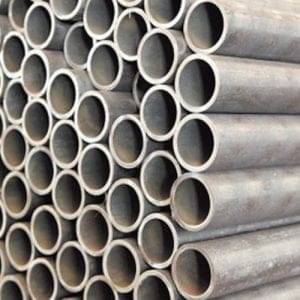
Regular maintenance and inspection of boiler tubes are essential for ensuring their longevity and safe operation.
Inspection Procedures
- Visual Inspection: Regularly checking for visible signs of wear, corrosion, or damage.
- Ultrasonic Testing: Using ultrasonic waves to detect internal defects or thinning of tube walls, important for high-pressure applications.
- Hydrostatic Testing: Testing tubes with water at high pressure to identify leaks and ensure structural integrity.
Maintenance Practices
- Cleaning: Removing soot and other deposits that can affect performance and efficiency.
- Repairs: Addressing any detected issues promptly to prevent further damage and ensure safe operation.
- Replacement: Replacing severely damaged or worn-out tubes to maintain system efficiency and safety.
Conclusion
Understanding the various types of boiler tubes and their applications is essential for optimizing boiler performance and ensuring safety. Each type of tube, from water-tube to economizer tubes, has specific characteristics suited to different operational requirements. By selecting the appropriate type based on material, thickness, and application, you can ensure efficient and reliable performance of your boiler system. Regular maintenance and inspection further contribute to the longevity and efficiency of boiler tubes, making them a critical component in industrial and power generation systems.
FAQ
Q:What are the primary types of boiler tubes?
A:The main types of boiler tubes include water-tube, fire-tube, superheater, and economizer tubes. Each type serves a specific function within a boiler system, based on the operational requirements and conditions.
Q:How do I select the right boiler tube for my application?
A:Selecting the right boiler tube involves considering factors such as the type of boiler, pressure and temperature conditions, and the specific application. Material compatibility and cost are also important considerations.
Q:What materials are commonly used for boiler tubes?
A:Common materials include high-quality carbon steel, low-alloy steel, chromium-molybdenum steel, and stainless steel. The choice of material depends on the operating temperature and pressure requirements.
Q:How often should boiler tubes be inspected?
A:Boiler tubes should be inspected regularly, with maintenance practices including visual inspections, ultrasonic testing, and hydrostatic testing as needed. The frequency of inspections depends on the operating conditions and application.
Q:What common issues are found with boiler tubes?
A:Common issues include corrosion, erosion, and fatigue. These can be addressed through regular maintenance, prompt repairs, and replacement of severely damaged tubes.
Q:Can boiler tubes be repaired, or do they need to be replaced?
A:Repair or replacement depends on the extent of the damage. Minor issues can often be repaired, while severely damaged tubes may need to be replaced to ensure safe and efficient operation.
